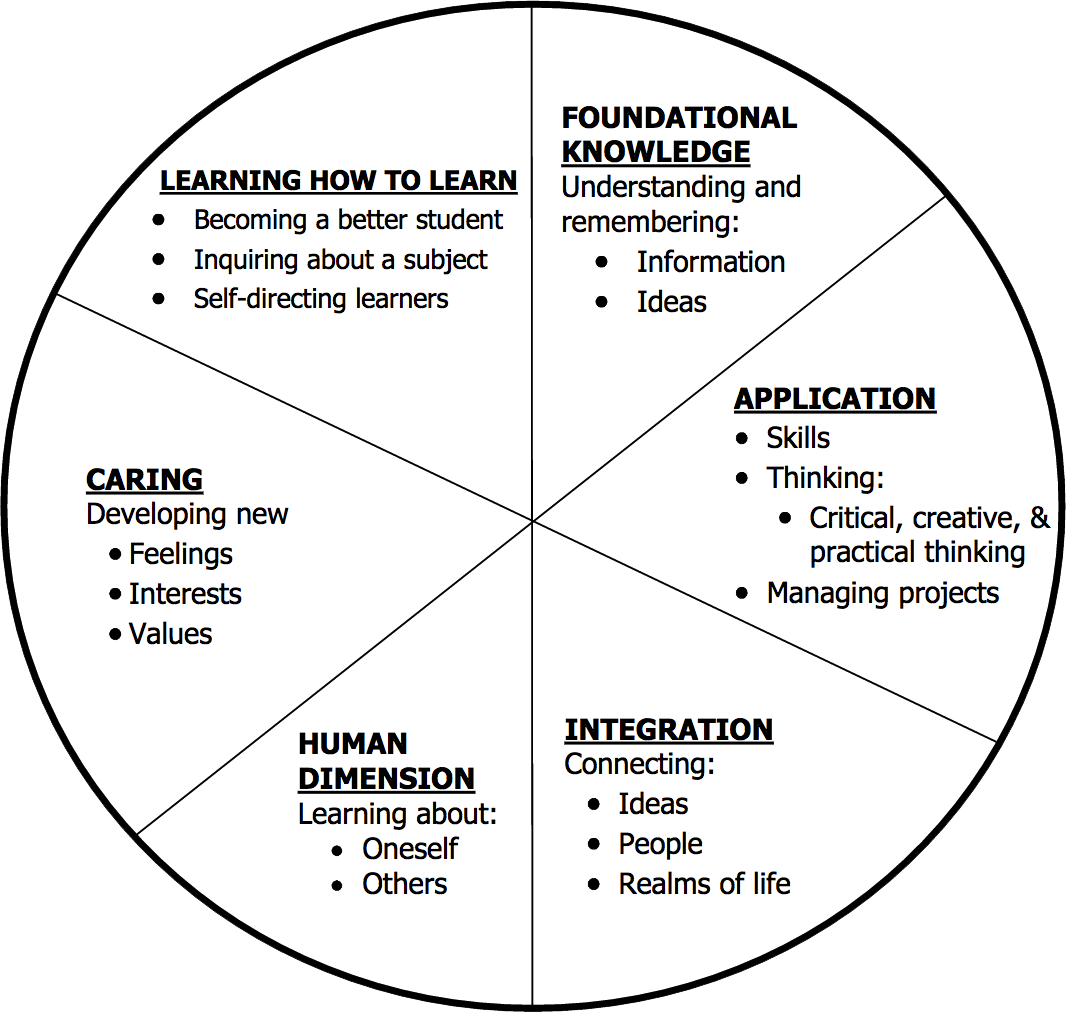To create significant learning experiences for our students, we must begin with clear goals in mind. -Fink, 2003
We often adopt the course goals and learning objective written by someone else or craft course goals and learning objectives to satisfy regulatory demands for learning goals that echo accrediting standards, we urge you to also think about what you want students to learn in your course. Significant learning involves long-term change.
Review Fink’s “Taxonomy of Significant Learning,” below, and consider the various types of significant learning that can occur in your course.

Think beyond a list of content topics to identify the most important pieces you want your students to know or know how to do as a result of taking your course. How do you hope your students will be changed because they took your course? In addition to a list of what students will know and know how to do by the end of the course, we encourage you to also include shifted perspectives, priorities, and values. These are your big-picture course goals, the high-level goals that you have for the overall course.
The next step is thinking about how you will collect evidence of students' progress toward your course goals and establishing course learning objectives. Successfully written learning objectives are observable, measurable, and clearly defined. Objectives should be written in language that students can easily understand in order to provide students with guided learning, motivation, and the basis for assessment throughout different sections of the course.
When writing learning objectives, you want to use your goals to articulate exactly what you want your students to achieve or be able to demonstrate.
Overall learning objectives:
- Identify what the students should learn
Example: learning objectives
- Use Bloom's taxonomy and action verbs to identify the level of knowledge you want your students to demonstrate
Example: Create measurable learning objectives (Bloom’s synthesis level- create is the action verb)
- Add criteria on how the outcome will be observed or measured
Example: Create measurable learning objectives for a course module to align content, activities, and assessment with learning outcomes.
Remember: Objectives are statements of student behavior, not descriptions of what or how the student will be taught. Arizona State University has an excellent objective builder that may be helpful in creating your course and module objectives. Although this isn’t the philosophy of all pedagogical institutions, Susan Ko and Steve Rossen, authors of Teaching Online: A Practical Guide (2010) have some great, practical advice:
“Don't drive yourself crazy trying to write ever more precise learning objectives- the main point is to express as clearly and plainly as possible what it is you want your students to learn and how they can best demonstrate that they have learned it” (p.57).
References:
Fink, L. D. (2003). A self-directed guide to designing courses for significant learning. Available from https://www.deefinkandassociates.com/GuidetoCourseDesignAug05.pdf
Ko, S., Rossen, S. (2010). Teaching online: A practical guide. New York, NY: Routledge.